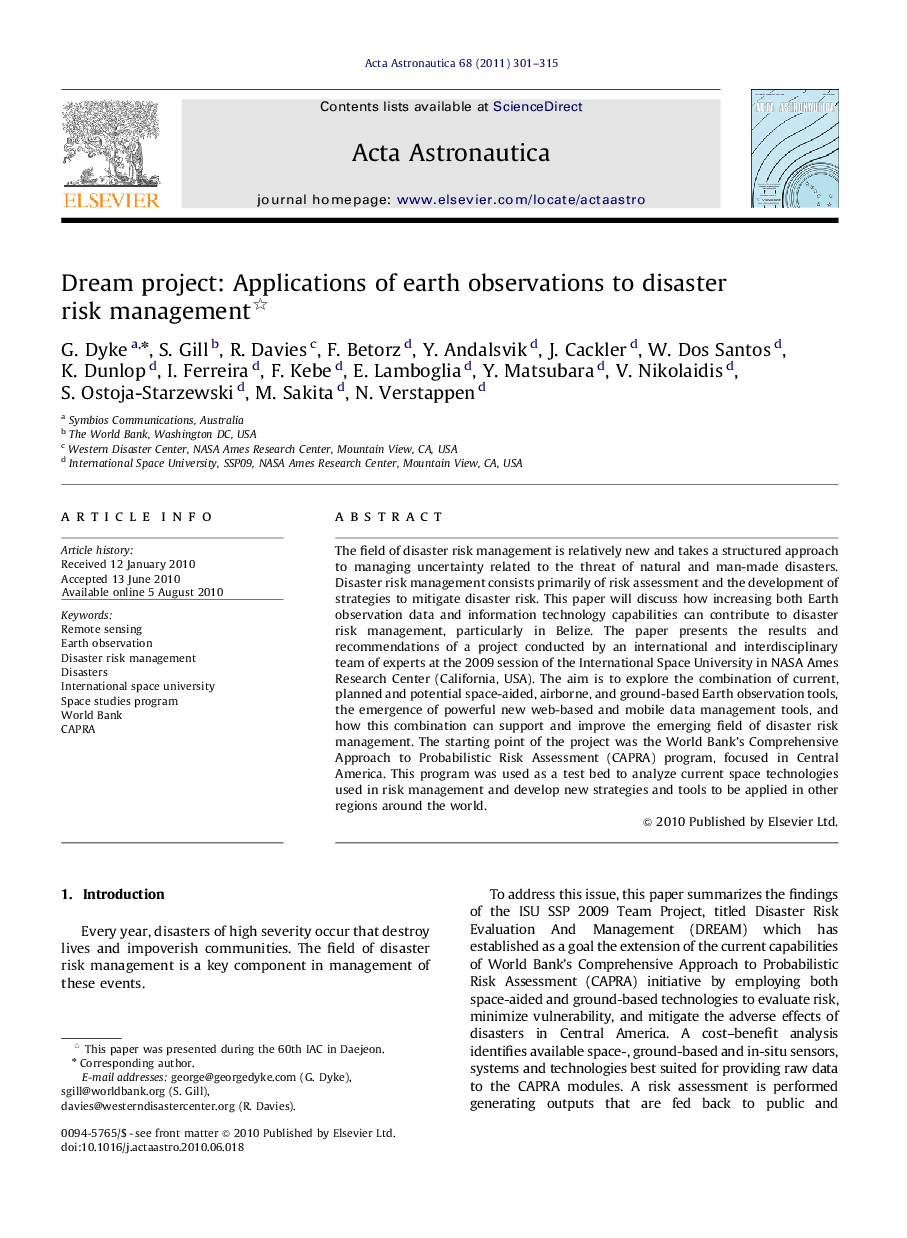| Article ID | Journal | Published Year | Pages | File Type |
|---|---|---|---|---|
| 1716218 | Acta Astronautica | 2011 | 15 Pages |
The field of disaster risk management is relatively new and takes a structured approach to managing uncertainty related to the threat of natural and man-made disasters. Disaster risk management consists primarily of risk assessment and the development of strategies to mitigate disaster risk. This paper will discuss how increasing both Earth observation data and information technology capabilities can contribute to disaster risk management, particularly in Belize. The paper presents the results and recommendations of a project conducted by an international and interdisciplinary team of experts at the 2009 session of the International Space University in NASA Ames Research Center (California, USA). The aim is to explore the combination of current, planned and potential space-aided, airborne, and ground-based Earth observation tools, the emergence of powerful new web-based and mobile data management tools, and how this combination can support and improve the emerging field of disaster risk management. The starting point of the project was the World Bank’s Comprehensive Approach to Probabilistic Risk Assessment (CAPRA) program, focused in Central America. This program was used as a test bed to analyze current space technologies used in risk management and develop new strategies and tools to be applied in other regions around the world.
